Phone evolution and revolutionTechnical
Esther Cerdeño
IT Deputy Manager
MAPFRE RE
Madrid - Spain

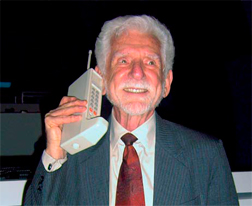

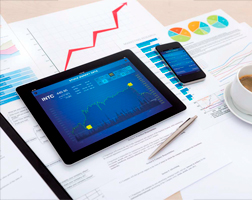
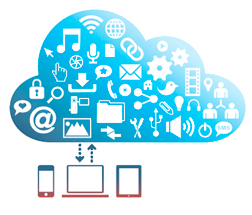

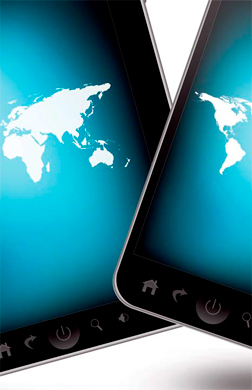
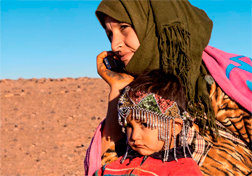

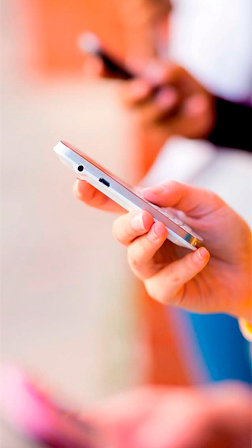

Throughout its history, telephony has changed, new ways of communication have been devised, new models have been launched to meet the constantly changing demands of society, and at times, creating needs inconceivable up until then.
The first telephone device was invented at the end of the 19th century. No one could have imagined that phones would evolve so remarkably and have such wide-reaching effects 135 years later.
Telephone communication is part of our daily life regardless of age, sex or social status. Land or cable lines have been further supplemented by mobile phones, which are beginning to be considered essential parts of personal and business life.
Particularly striking is the rapid expansion of mobile phones in emerging economies and even in developing countries. In China, India and Brazil, mobile phone acceptance has been demonstrated beyond all doubt. Table 1 shows an increase of about 900% between 2000 and 2011.
The first telephone device was invented at the end of the 19th century. No one could have imagined that phones would evolve so remarkably and have such widereaching effects 135 years later
For this phenomenon to take place, not only was it necessary to create a device capable of performing multiple applications, it also required the development of communication lines. There has been a progression from the initial use of cable line, through fibre optics and satellite communication, to broadband (Internet data transmission with a download speed of 5.76 Mb per second). This has expanded throughout the world, and has enabled communication without the need of cabling infrastructure, thus avoiding the high costs in countries with fewer resources.
The evolution of mobile phones
Landlines are widespread throughout the world, but with a clear downward trend. The first mobile phones appeared in the late 1940s, after the Second World War. They were very expensive, heavy and large, so they were generally used inside vehicles and only by a limited number of people.
The real revolution got under way when fourth generation (4G) devices appeared with faster voice and data transmission speeds, to become vital social and leisure attributes
In 1982 Bell Laboratories in the United States created the device now known as the first-generation mobile phone (1G, analog voice) which relied on AMPS (Advanced Mobile Phone System) technology. They also reached England and Japan, where they were known as TACS (Total Access Communications System) and MCS-L1, respectively.
| 2000 | 2001 | 2002 | 2009 | 2010 | 2011 | 2000-2011 | |
|---|---|---|---|---|---|---|---|
| Brazil | 23.188.171 | 28.745.769 | 34.880.964 | 169.385.584 | 196.929.978 | 244.357.507 | 953,80% |
| China | 85.260.000 | 144.820.000 | 206.005.000 | 747.214.000 | 859.003.000 | 986.253.000 | 1.056,76% |
| India | 3.577.095 | 6.540.000 | 13.000.000 | 525.090.000 | 752.190.000 | 893.862.478 | 24.888,50% |
Second generation phones (2G) appeared in 1990. They were smaller, lighter and cheaper, and based on GSM (Global System for Mobile Communications) providing digital cellular communication, which improved the quality and security of voice transmission. This technology allowed the transmission of several conversations simultaneously over a single channel, which greatly reduced the price in the contract of lines, and promoted their integration into the business world.

Source: http://.itu.int/ict/statistics
From that moment on, and following the expansion of computer use and the Internet, workstations connected to a local network were replaced with desktops and laptops with LAN (Local Area Network) and WAN (Wide Area Network) connections. Society started to address the need for data transmission (Multimedia). And so began what is known as the third generation (3G) and the development of UMTS (Universal Mobile Telecommunications System) technology. Mobile phones began to incorporate Internet connection, allowing the transmission of files. Among the functions or services offered, photo and video cameras and games gained great importance, adapting mobiles to the home and business environments.

Source: IC4D 2012 report published at http://web.worldbank.org
This is when the real revolution got under way. Fourth generation (4G) devices appeared with faster voice and data transmission speeds, and they became vital social and leisure attributes. Young people aged between 18 and 30 constitute the social group in which mobile phone use has expanded most rapidly, although the age at which the devices are acquired has been falling steadily and is now about 12. Teenagers are the driving force behind mobiles given the importance for them of being constantly in touch, with access to various social networks like Twitter, Facebook and the Spanish Tuenti. It is common to see groups of friends gathered at the same table sharing a meal, communicating with others located hundreds or thousands of miles away through social networks or making a purchase online. This form of social interaction is no longer considered extraordinary.
Decisions can be made at business meetings based on online data derived from systems located in other offices by simply accessing the Internet via Smartphones or tablets, using secure VPN (Virtual Private Network) connections. Users can exchange files, download videos, remotely update data or establish video conferences with others in their organization.
Forty years ago, Martin Cooper, executive from Motorola made the first call from a mobile. He made it at the Sixth Avenue, New York, and was addressed to his major rival in the sector, Joel Engel from Bell Labs, AT&T.
Cooper said: Do you know where am I calling you from?
The call was made though a prototype of Motorola. Its weight was of 794 grammes and its size, 33 x 45 x 8.9 centimeters. It needed ten hours to be charged and its battery only lasted for half an hour. Its current price would be of 7,200 euros.
The concept of mobility today
The current tendency is clearly towards the integration of telephony with a large part of the services and applications that can be obtained using a computer. The challenge that various international technology companies are currently facing is the integration of a telephone, camera and laptop computer in the same device and with access to numerous applications (videoconferencing, ebooks, television channels and social networks). Out in front are Apple and Samsung with their current Tablets and Smartphones. Close behind is Microsoft with its launch of Surface, a multi-user and multi-touch system capable of identifying various objects on the screen, and which can incorporate a physically independent keyboard.
Today servers are available with high storage capacity, accessible via the internet, and without the users being aware of the changed storage location of their data
According to report IC4D 2012 (Information and Communications for Development) published by the World Bank, a change in the market for both operating systems and mobile devices came about in 2011. While Nokia held 47% of the market in 2008, Google’s ‘Android’ operating system accounted for 50% by 2011 and continued to grow during 2012, gaining market shares from Apple’s iOS operating system.
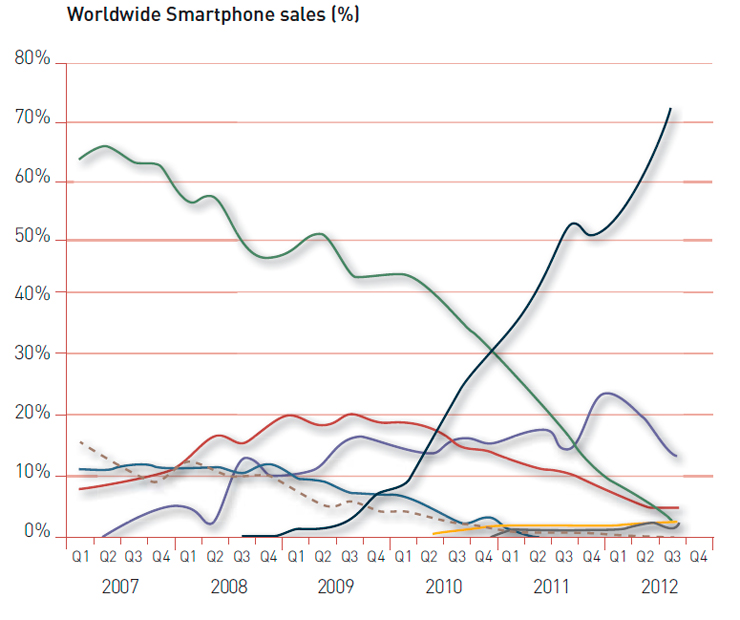
Source: Gartner 2012.12.07
“Cloud Computing” has emerged to complement the world of services and applications. Some years ago there was talk of centralising servers at a global level to provide access for thousands of users situated throughout the world. Today servers are available with high storage capacity, accessible via the Internet, and without the users being aware of the changed storage location of their data.
Application services for mobiles
The applications (apps) market started up with Apple’s iOS in 2010. With the introduction of the latest version of Google’s Android, a situation of strong competition has been created between both systems.
Before an application is developed, the factors shown in Table 2 must be taken into account.
|
| Applications/Services | Description |
|---|---|
| General | Calculators, alarms, notepads, diaries. |
| Geolocation | Identification and position of devices (ships, stars). GPS techniques are used. There is a legal vacuum regarding individuals, so this service has not seen great development. |
| Sport | Allows real-time values associated with sporting activities (walking, running, swimming) to be recorded, such as heart rate. Recommends the training to be followed, routes and exercises. |
| Medicine | World maps with information on international epidemics in real time. Applications for the control of blood alcohol levels, telerehabilitation, stimulation for disabled people and control of medicines. |
| Leisure | Search engines for leisure and event venues, music players, videos, films, access to television and radio channels, games. |
| Business | Presentations and videoconferences, remote access to applications, online and offline statistics, maps of geographic results, market analysis, inventory access, presentation of products to clients, launches of marketing campaigns. Direct-to-bill mobile payments avoiding the use of credit cards for Internet transactions. |
| Social | News of a general nature, magazines or newspapers, access to social networks (Twitter, Facebook), messaging (WhatsApp, Spotbros). |
| Cloud | Access to files stored in the cloud. |
| Education | Courses (languages, cooking, instruments), translators, books (novels, child education, media, university), virtual universities. |
There are several applications in the market that can be either acquired free or paid for. Free or low-cost applications are frequently reduced versions with less functionality and are generally acquired through online stores associated with the system manufacturers.

Source: ITU World Telecommunication / ICT Indicators database

Source: Global ICT developments, 2001-2011
Data on the global use of mobile handsets
It is thought that in 2000 there were some 1,000 million mobile handsets. The World Bank report on mobile telephones calculates that a figure of 6,000 million contracts will shortly be reached.
It is thought that in 2000 there were some 1,000 million mobile handsets. The World Bank report on mobile telephones calculates that a figure of 6,000 million contracts will shortly be reached
According to a Global ITC DEVELOPMENT report published by the ITU, the number of mobile telephones in the world increased from 15.5 to approximately 87 per 100 inhabitants between 2001 and 2011 (Figure 5).
According to IDC (International Data Corporation), in its Worldwide Quarterly Smart Connected Device Tracker study, during the third quarter of 2012 the record for global sales of intelligent devices with Internet connection was beaten with an increase of 27% compared to the previous quarter. 717 million Smartphones with internet connection and more than 122 million tablets were sold between January and November 2012.
IAB Europe (European Digital and Interactive Marketing Association) carried out the “Mobile Media: consumer insights across Europe” study with data on Internet access through mobile devices in 19 European countries. It concluded that Spain has a high level of mobile internet penetration (26%), behind Finland and France and ahead of Germany. 12 million users (50% of whom are older than 35) use it mainly to find information, write e-mails, access social networks and show interest in mobile advertising (two-thirds of mobile Internet users say they are interested in some form of mobile advertising), and 36% have experienced making payments or reserving products from a mobile handset.
In terms of countries, China and India occupy the leading positions, although in other countries the percentage penetration can be higher in relation to the number of inhabitants (Table 4).
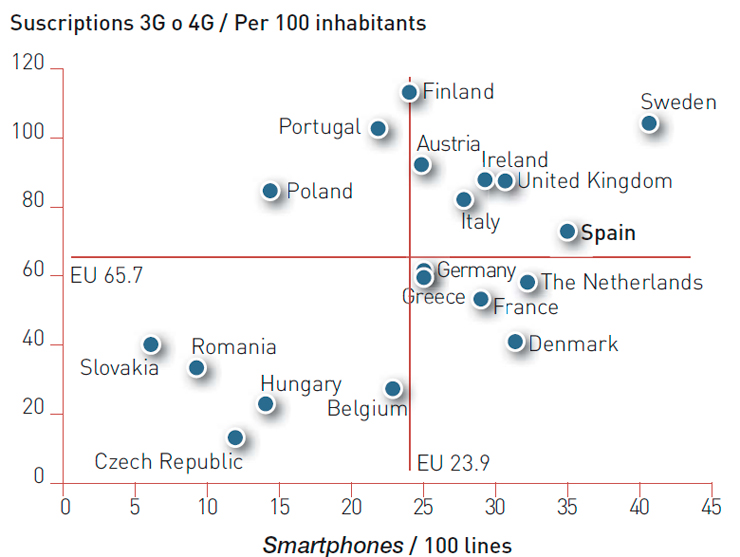
Source: eEspaña 2012 originating from NetSize Guide (2011)
The data are more remarkable in the countries of the developing world, since in the last two years, the number of mobile phones has increased up until 1,500%. In the African continent in particular, the GSMA Association report says that the number of subscribers has grown by almost 20% annually for the last five years.
| Number of mobiles | Total | Per 100 inhabitants | ||
|---|---|---|---|---|
| Country | 2010 | 2011 | 2010 | 2011 |
| Argentina | 53.700.000 | 55.000.000 | 132,88 | 134,92 |
| Brazil | 202.944.033 | 242.231.503 | 104,10 | 123,18 |
| China | 859.003.000 | 986.253.000 | 64,04 | 73,19 |
| Colombia | 44.477.653 | 46.200.421 | 96,07 | 98,45 |
| Egypt | 70.661.005 | 83.425.145 | 87,11 | 101,08 |
| France | 63.200.000 | 66.300.000 | 100,66 | 105,03 |
| Germany | 104.560.000 | 108.700.000 | 127,04 | 132,30 |
| India | 752.190.000 | 893.862.478 | 61,42 | 72,00 |
| Indonesia | 211.290.235 | 236.799.493 | 88,08 | <97,72/td> |
| Italy | 90.600.000 | 92.300.000 | 149,63 | 151,84 |
| Japan | 123.287.125 | 129.868.418 | 97,43 | 102,67 |
| Korea (Rep.) | 50.767.241 | 52.506.793 | 105,36 | 108,50 |
| México | 91.362.753 | 94.565.305 | 80,55 | 82,38 |
| Nigeria | 87.297.789 | 95.167.308 | 55,10 | 58,58 |
| Philippines | 79.895.646 | 87.256.359 | 85,67 | 91,99 |
| South Africa | 50.372.000 | 64.000.000 | 100,48 | 126,83 |
| Spain | 51.601.028 | 53.066.828 | 111,99 | 114,23 |
| Turkey | 61.769.635 | 65.321.745 | 84,90 | 88,70 |
| United Kingdom | 81.115.492 | 81.612.000 | 130,76 | 130,75 |
Some recent applications
In socioeconomic terms, new technologies are considered an important tool for developing countries owing to the ease of using touchscreens. For example, Millennium Development Goals (MDGs) have demonstrated some of the objectives achieved through the use of mobile telephones:
- Nigeria: reduction in costs associated with grain sales. Access to mobile telephones has made it possible to obtain better information on cereal prices throughout the country, without incurring the high cost of travelling to the various markets, thus achieving 29% more profit. In this example, demand arose organically, and not via a specific programme.
- Ghana: reduction in greenhouse gas emissions of 2% by the year 2020 (GSM Association 2009). Mobile telephones can be used as tools for environmental monitoring. Taxi drivers in its capital, Accra, were equipped with mobile telephones with GPS and a device with a carbon monoxide sensor to measure pollution levels.
- Kenya: three in every four people now have a mobile telephone. The application, called EpiCollect, helps undertaking monitoring of animal vaccination and treatment campaigns. The application and storage space are provided free of charge on the EpiCollect web page, which assigns a unique address for each project. This address is known only to users – such as national veterinary officers and field veterinarians – taking part in the project. Searches cannot be conducted on the EpiCollect database, thus preventing the merely curious from being able to find potentially sensitive information.
- Medicine: the rehabilitation clinic Dodd Hall, in Ohio, USA, started using equipment to help in rehabilitation from strokes and spinal injuries.
- Companies: interaction with clients and empowerment of company personnel. The CIOs (Chief Information Officers) are promoting mobile phones due to their ease of use and capacity for obtaining control systems, making it possible to analyse the state of the company at any time. The settingup of BYOD (Bring Your Own Device) is being started, within the business environment, enabling employees to use their personal devices as tools in their jobs.
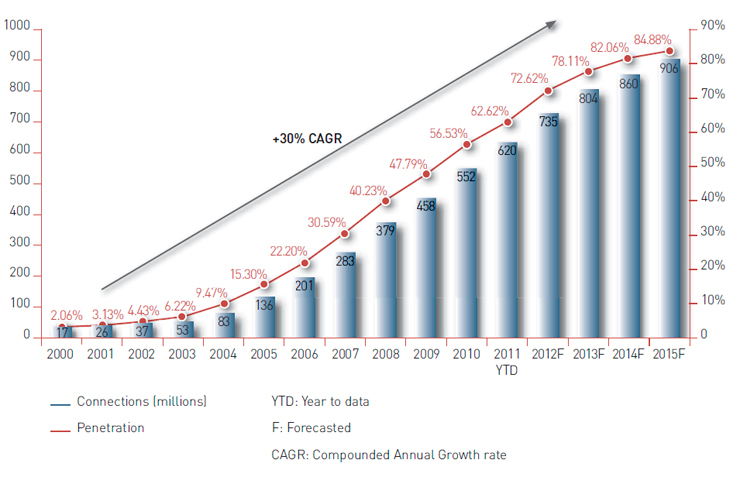
Source: African mobile observatory 2011 of GSMA (Groupe Speciale Mobile Association)
Insurance applied to mobile devices
The insurance companies are trying to gain market shares among private customers and companies in this sector, owing to the huge growth of mobile telephones, whether smartphones or not, and tablets. Another factor that has an influence is the great dependence arising from the storage of personal and/or professional information.
The fact that these devices can be expensive has led insurance companies, mobile manufacturers and telephony operators to launch products covering damage arising from theft, breakage, malfunctions due to dropping, rusting, loss, and fraudulent use of information or the making of calls from telephones that have been stolen or lost
In addition, the fact that these devices can be expensive has led insurance companies, mobile manufacturers and telephony operators to launch products covering damage arising from theft, breakage, malfunctions due to dropping, rusting, loss, and fraudulent use of information or the making of calls from telephones that have been stolen or lost.
The insurance cost will depend on the offered cover, although it is very important to analyse certain factors: replacement value of the device, information stored, back-up copies, confidentiality, need to recover information due to loss or theft, use during travel within the country or abroad, type of user or guarantee offered by the manufacturer.
| Cover for theft or loss | Cover for breakdown |
|---|---|
|
|
Generally, two types of cover are offered: theft or loss and breakdown (Figure 5). In the case of theft, they provide compensation to replace the mobile telephone or replacement via a device of the same value.
In the case of breakdown, repair or replacement of the device is envisaged for failures of the memory cards or damage by spilt liquids, remote assistance and recovery of stored data, for example.
Thoughts about the future
The introduction of Smartphones and Tablets has completely changed the concept of mobility and telephony. The method of accessing the Internet from mobile devices, the appearance of long-range touchscreens and the improvement in bandwidths for the Internet connection are all facilitating the creation and release of functionalities capable of meeting user demands, including the original service of having a telephone conversation.
If the number of internet-connected mobile devices is growing sharply and their functionalities can be applied for the benefit of society in general, should we consider their negative impact to be a critical factor?
As a final thought, on a matter that should be discussed in a near future, if the number of internet-connected mobile devices is growing sharply and their functionalities can be applied for the benefit of society in general, should we consider their negative impact to be a critical factor? Is there really a possibility of physical or mental injury caused by these devices, such as changes in behaviour? What safety measures should be taken to protect the information contained? What policies should be adopted at company level? Is LTE (Long Term Evolution, 4G) already a reality since it can exploit speeds of more than 100 Mb?
References
Commission for the Telecommunications Market: http://.cmt.es: Report “NM Septiembre 2012 ES.pdf”
Global Telecom Insight, Investigación de Mercado: http://discovermobilelife.com/
IAB EUROPE: http://.iabeurope.eu
World Bank Institute: http://.worldbank.org, Referencia informe ”IC4D 2012: Maximizing Mobile”
National Observatory for Telecommunications and the Information Society (public body assigned to Red.es): http://.ontsi.red.es
Website on Technology for SMEs: http://.ticpymes.es
Chetan Sharma Consultancy: http://.chetansharma.com/globalmobileupdate1H2011.htm
International Data Corporation: http://.idc.com
International Telecommunication Union – ITU: http://.itu.int/ITU-D/ict
Mobile Active: http://.mobileactive.org/files/file_ uploads/African_Mobile_Observatory_Full_ Report_2011.pdf
Portal on 4G, LTE: http://.lteportal.com
La Web del campo: http://.agrodigital.com/PlArtStd.asp?CodArt=88656



